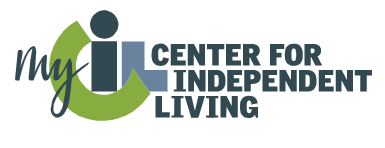While flying with a wheelchair may pose challenges, it doesn’t need to prevent you from having a good trip. Read on to learn how you can plan for a better flight with your wheelchair.
The Challenges of Flying With a Wheelchair
Airlines may forget to load a bag. They may even damage a bag. While this is an inconvenience for travelers, it’s far worse when it happens to wheelchairs or other assistive devices.
The loaner wheelchairs airlines often provide are typically far inferior to your own. And in the case of a damaged wheelchair, you could be left for months struggling with the loaner while yours gets repaired.
New Rule Makes Airlines Responsible for Reporting Wheelchair and Scooter Stats
The problem of missing or damaged wheelchairs during flight travel appears to be widespread. The issue is the word “appear.” That is because — until now — airlines did not have to report wheelchairs separately from baggage. There was no way to know how many wheelchairs airlines have mishandled.
Now airlines are required to report statistics specifically for wheelchairs and scooters. How will this help?
Accountability
Airlines can no longer hide their mishandled wheelchair and scooter statistics within their baggage statistics. They will have to work harder to improve their statistics.
Informed Decisions
Now passengers can make informed decisions about the airlines they choose to travel with. Instead of hoping for the best, they can select airlines with the lowest frequency of mishandled wheelchairs and scooters.
Did You Know the Americans With Disabilities Act Doesn’t Cover Air Travel?
Did you know the Americans With Disabilities Act (ADA) doesn’t cover air travel? The Air Carrier Access Act (ACAA) does.
While the ACAA contains protections for travelers with disabilities, it lacks a fundamental right: the private right of action. This means that an air traveler cannot bring a lawsuit against an airline they believe violated their rights.
Although you can file a complaint with the airline and the DOT, these complaints are seldom acted on. In 2018, only three of the roughly 30,000 disability-related complaints resulted in fines for the airline.
Advocating for More Protections When Flying
Advocacy groups, such as the Open Doors Organization and the Paralyzed Veterans of America, are working hard to make air travel better for people with disabilities. In fact, they have several key goals to improve how people with disabilities fly.
Amend the ACAA for More Protections
Disability advocacy groups are working together to improve the protections in the ACAA.
Firstly, they want it to include a private right of action. In other words, they want the ACAA to include the right of an individual air traveler to bring private legal action against an airline that violated their rights.
Secondly, they want to make airplanes more accessible to travelers with disabilities. This ranges from how planes are built to how airports handle travelers using wheelchairs, scooters and other assistive devices.
Create Guidelines for Handling Wheelchairs
Wheelchairs are far different than baggage. Above all, they are specialized assistive devices that can weigh hundreds of pounds. Moreover, they contain high-tech and delicate features that are prone to damage.
With proper instruction and guidelines, the airline crew handling the wheelchairs could prevent damage. Advocacy groups are working to improve the training airline crews receive.
Make Wheelchairs More Travel-Friendly
Advocacy groups are working with wheelchair manufacturers to make them more travel-friendly. From updating the design to improving the labeling, manufacturing wheelchairs for air travel is a way to improve outcomes.
How You Can Improve Your Flying Experience
While the new rule of reporting wheelchair statistics is a step in the right direction, far more work has to be done to make air travel more accessible. In the meantime, there are steps you can take to improve your flying experience.
Contact the Airline Before You Fly
Before you arrive at the airport, contact the airline directly to let them know about your needs. Explain when you’ll be traveling and the specifics of your wheelchair.
Use Your Airline’s Wheelchair Handling Form
Visit your airline’s website for their wheelchair handling form. After filling it out, attach it to your chair.
Request an Aisle Chair for Boarding
As soon as you arrive at the airport, speak directly with an airline agent. Let them know you will need an aisle chair for boarding.
Arrive Early to Your Gate to Talk to Staff
Plan to arrive early to your gate. That way you have time to show the gate staff how to operate your wheelchair. You’ll want to explain to them how best to handle it during flight transferring and storage.
You will also want to ask for a gate-check claim ticket. You’ll need to know specifics about your wheelchair, such as its weight and battery type.
While talking to gate staff, confirm they have an aisle chair ordered — and it will be there for you.
Plan an Extra Carry-on for Removeable Parts
When you arrive at your gate, remove any parts that can fit into a carry-on bag. For instance, you can remove headrests or cushions.
What to Do If Your Wheelchair Is Damaged
If your device ends up damaged after your flight, there are steps you can take.
Notify Your Airline
You’ll need to notify your airline of your damaged assistive device as soon as you can.
According to the ACAA, your airline must return your wheelchair or other assistive device in the condition it was in. Otherwise, they must compensate you for the original price you paid for it.
Unfortunately, the ACAA does not require your airline to provide a loaner. While it’s not a requirement, many airlines do.
Contact Global Repair Group
Global Repair Group contracts with major airlines across the nation to repair devices and provide loaner equipment.
If your wheelchair, scooter or other assistive device was damaged, you can contact them directly. They will help you expedite your claim as well as provide a loaner device if needed.
File a Complaint
File a written complaint with your airline as well as the Department of Transportation (DOT). You can also ask to speak with your airline’s complaint resolution official (CRO).
The ACAA requires every airline to have a CRO available — by phone or in person — to help travelers with any disability-related challenges.
A Better Future for Air Travel
Hopefully, as advocacy groups work to improve air travel for people with disabilities, we’ll see fewer and fewer complaints. In the meantime, you can take some precautions and extra steps to ensure your successful trip.





